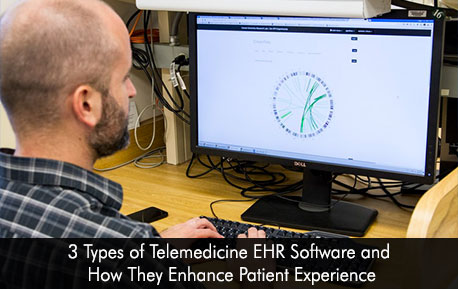Telemedicine is a tailor-fit solution amidst the outbreak of the COVID-19 pandemic. Telemedicine EMR software solutions have been around for some time now, but due to sudden change in the healthcare environment governments are urging hospitals, providers, and patients to use this powerful platform to extend care remotely. For many medical set-ups and patients telemedicine platform is a new technology and hence both parties need to learn its usage to help manage care in the best possible way.
The growth of telemedicine technology
Since the pandemic hit the whole world according to a Sermo Survey conducted in April 2020, 63% of physicians have used telemedicine to provide care to patients from the comfort of their homes. This increase in the rate reflects that telemedicine solution is seen effective to diagnose and treat patients without having to worry about catching the virus. Through the platform patients who had mild symptoms of the virus were able to consult their doctors through real-time video sessions. The trend is here to remain because both patients and providers see telemedicine as a convenient means to offer treatment where it is possible.
3 types of telemedicine
Real-time telemedicine – Real-time telemedicine is the most common type of telemedicine module which is used by providers and patients. A software enables both parties to have live sessions via video conferencing, live chat, or phone calls. A real-time telemedicine platform is a perfect option to conduct screenings, general assessments, and mental therapies. Real-time telemedicine offers convenience to both parties and enables patients who are old and at more risk to catch the virus to receive care from their homes.
Remote patient monitoring – Remote patient monitoring helps healthcare providers to track and monitor patient’s health data from afar. This type of telemedicine is suited for patients who have chronic conditions and can’t leave their homes for face to face check-up. Hence daily trips can be easily avoided to the healthcare provider. Remote patient monitoring tools help to enhance the patient experience as they can collect all health information while the patient is in their home and then that information is sent to clinicians. Remote monitoring telemedicine is ideal to gather data related to oxygen levels, blood pressure, and heart rate.
Store-and-forward telemedicine – Store-and-forward telemedicine collects data and saves it securely in a cloud that can be easily accessed by authorized users. This telemedicine platform is the opposite of real-time telemedicine. Store-and-forward telemedicine makes it possible for providers to analyze all patient data and identify trends to provide evidence-based care which ultimately leads to accurate diagnosis and improves patient outcomes.
Conclusion
Telemedicine technology is the way forward in healthcare. More and more patients and providers and relying on the robust solution to make healthcare more accessible even on the outskirts. Many telemedicine software vendors offer a set of features to improve patient care such as athenahealth EMR software, Kareo Clinical EMR Software, Modernizing Medicine Healthcare IT Suite, and Epic EMR software. If you haven’t thought about using a telemedicine software solution for your practice now is the time.







